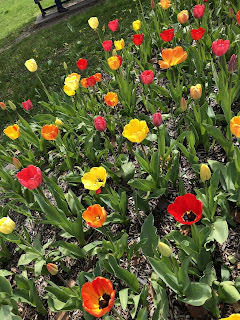If you've been reading this blog for a while, you know that I like Brooks leather saddles. I ride them on all of my bikes except Martie, my Fuji Allegro. It's a commuter/errand bike, so it doesn't get ridden for more than an hour at a time and gets parked on the streets in all kinds of weather. For the same reasons, the Cannondale mountain bike I gave Georgios didn't have a Brooks saddle.
The main reason I ride them, of course, is that I find them comfortable once they're broken in. But I also believe, perhaps erroneously, that they're better than other saddles for "green" reasons. When the leather or vinyl covers of plastic-based padded saddles (like the ones from Cinelli, Bontrager and other companies) rip or deteriorate, they are as likely as not to end up in a landfill.
Well, it seems that someone is trying to address that issue. Someone who sells under the name "BankBen" on Ebay has contracted with a furniture upholsterer to re-cover those seats. (He writes the word as "recover," which made me think, at first, that they had been rescued--which, one could say, they were.) There are Flite-type racing mounts as well as Avocet-type seats. Here is a lovely example of the latter:
The red paisley covering came from an old piece of furniture. So did the olive-covered top on this one:
and this nice brown distressed leather cover:
and this gray suede:
So, these saddles offer a double benefit: They're recycling, not only what people sit on when they ride, but what the might recline in after the ride!
The main reason I ride them, of course, is that I find them comfortable once they're broken in. But I also believe, perhaps erroneously, that they're better than other saddles for "green" reasons. When the leather or vinyl covers of plastic-based padded saddles (like the ones from Cinelli, Bontrager and other companies) rip or deteriorate, they are as likely as not to end up in a landfill.
Well, it seems that someone is trying to address that issue. Someone who sells under the name "BankBen" on Ebay has contracted with a furniture upholsterer to re-cover those seats. (He writes the word as "recover," which made me think, at first, that they had been rescued--which, one could say, they were.) There are Flite-type racing mounts as well as Avocet-type seats. Here is a lovely example of the latter:
The red paisley covering came from an old piece of furniture. So did the olive-covered top on this one:
and this nice brown distressed leather cover:
and this gray suede:
So, these saddles offer a double benefit: They're recycling, not only what people sit on when they ride, but what the might recline in after the ride!











